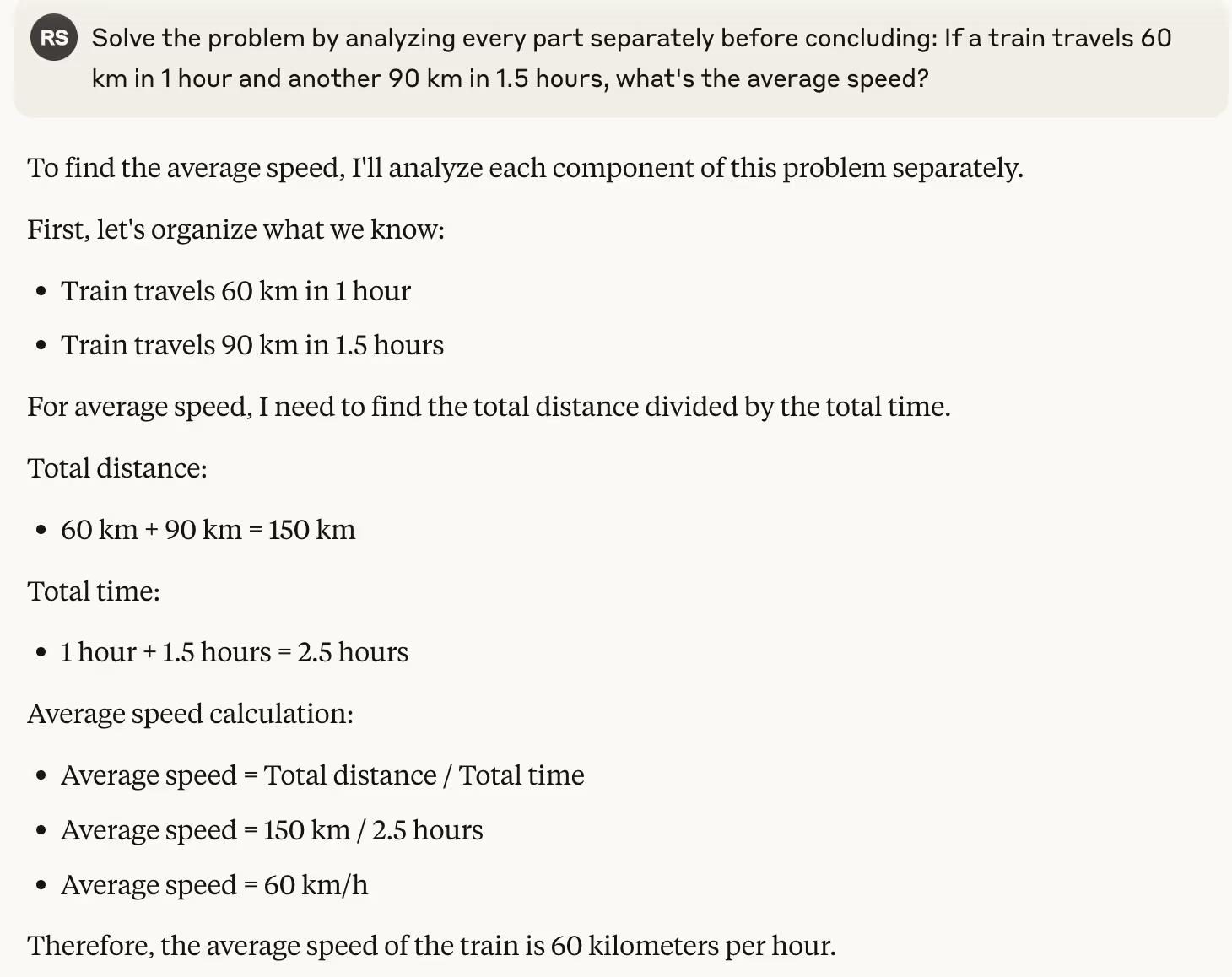Chain-of-thought (CoT) prompting is a powerful technique that helps AI models tackle more complex problems by guiding them through step-by-step reasoning. Instead of jumping straight to an answer, the model is prompted to think out loud—breaking the task into logical steps, much like how a human would solve it.
This approach not only improves accuracy but also makes the AI’s thinking process more transparent and reliable. When you combine CoT prompting with a few examples (known as few-shot prompting), you can significantly boost performance on tasks requiring deeper understanding or multi-step reasoning.
In this tutorial, we’ll show you how to use CoT prompting to get the desired results you always wanted with an AI chatbot. Not only will you create high-quality responses from your AI, you’ll be able to get your tasks done perfectly.
You’ll learn how to:
- Structure your prompts
- Build context with keyword research
- Optimize your results
Let’s dive in right away!
Step 1 - Structure your prompts
Chain-of-thought (CoT) prompting guides the AI through a step-by-step reasoning process to handle complex problems more effectively. And when you pair it with a few-shot approach—using a few examples as a template—you can get even better results on tasks that really need a bit of thinking before answering.
The first step is to define your tasks clearly. Let’s say you want to solve a math problem. Structure your prompt like the following:
Prompt:
Solve the problem by analyzing every part separately before concluding: If a train travels 60 km in 1 hour and another 90 km in 1.5 hours, what's the average speed?

If you do not structure your prompts while asking a math problem, it might provide answers without showing any steps.
Prompt:
If a train travels 60 km in 1 hour and another 90 km in 1.5 hours, what's the average speed?

Another strategy to help you structure your prompts is setting a logical sequence. Outline a clear, logical order for the reasoning process. This can involve numbering or explicitly stating the sequence of steps. For example:
- Step 1: Identify and define the main variables.
- Step 2: Analyze the relationship between these variables.
- Step 3: Synthesize the findings into a final answer.
Let’s say you want to make a business decision instead of writing a one-liner prompt. You can set a logical sequence that allows AI bots to think and provide answers by reasoning in steps. For example, the following prompt uses the logical sequence to help you decide what to do with a customer satisfaction score, which is a customer retention KPI.
Prompt:
[Customer Satisfaction Score.pdf]
You’re a business analyst evaluating a product’s performance. Follow these steps to respond:
1. Identify key performance indicators (KPIs).
2. Interpret what the KPIs reveal.
3. Suggest one action to improve performance based on the data.
Think through each step before giving your answer.


That’s why we call it a detailed analysis. Without CoT techniques, Claude will provide an overview after multiple prompts.
Step 2 - Build context with keyword research
To get the best results from chain-of-thought prompting, you need to start with the right foundation, which means building context. One of the easiest and most effective ways to do this is through keyword research. By identifying the exact terms, questions, and phrases your audience uses, you can shape prompts that resonate with real-world needs. Therefore, keyword research helps your prompts speak the same language as your users—and that makes a big difference.
Let’s say you want to understand what your target audience wants before buying an air fryer. What questions does your audience ask when they are buying? Prompt Claude to understand these questions in the context of your product. Gather the questions that are often asked by the audience and use the CoT technique to ask Claude to find keywords related to these questions. This deepens the context and sharpens Claude's understanding of the subject.
Prompt:
Generate a list of long-tail keywords related to these questions:
Question 1: Which air fryer should I buy?
Question 2: Can I use oil in the air fryer?
Question 3: Can you bake in the air fryer?
Question 4: Why does my air fryer smell like plastic?

In contrast, if you ask Claude to provide a list of keywords based on the questions posed by typical buyers. You’d never get a detailed answer with a long list of keywords.
Prompt:
Please provide a list of keywords often searched by buyers buying air fryers for the first time.

See the difference between the results. CoT techniques deliver exact results that help you target specific keywords and generate traffic.
Step 3 - Optimize your results
It's important to keep things simple when writing prompts and avoid adding extra details that might confuse the AI. Use clear, straightforward language so the message is easy to understand. Whenever possible, include specific examples to help guide the AI’s response.
For example, you want to promote your air fryer brand. Use the following prompt that follows the CoT techniques.
Prompt:
Write a short social media caption promoting a compact air fryer for busy families.

Prompt:
Create an Instagram ad caption for an air fryer that cooks frozen fries in under 10 minutes, uses 85% less oil, and is perfect for college students.

Prompt:
List three key benefits of using an air fryer, each in one sentence, for a product brochure.

Another important lesson is to save what works! Create templates of the prompts that work and use them as needed.
Don’t be afraid to experiment—try different prompt phrases and see what gets the best results. Once you find something that works well, turn it into a reusable template to save time and keep your results consistent.
.avif)

.avif)


.png)